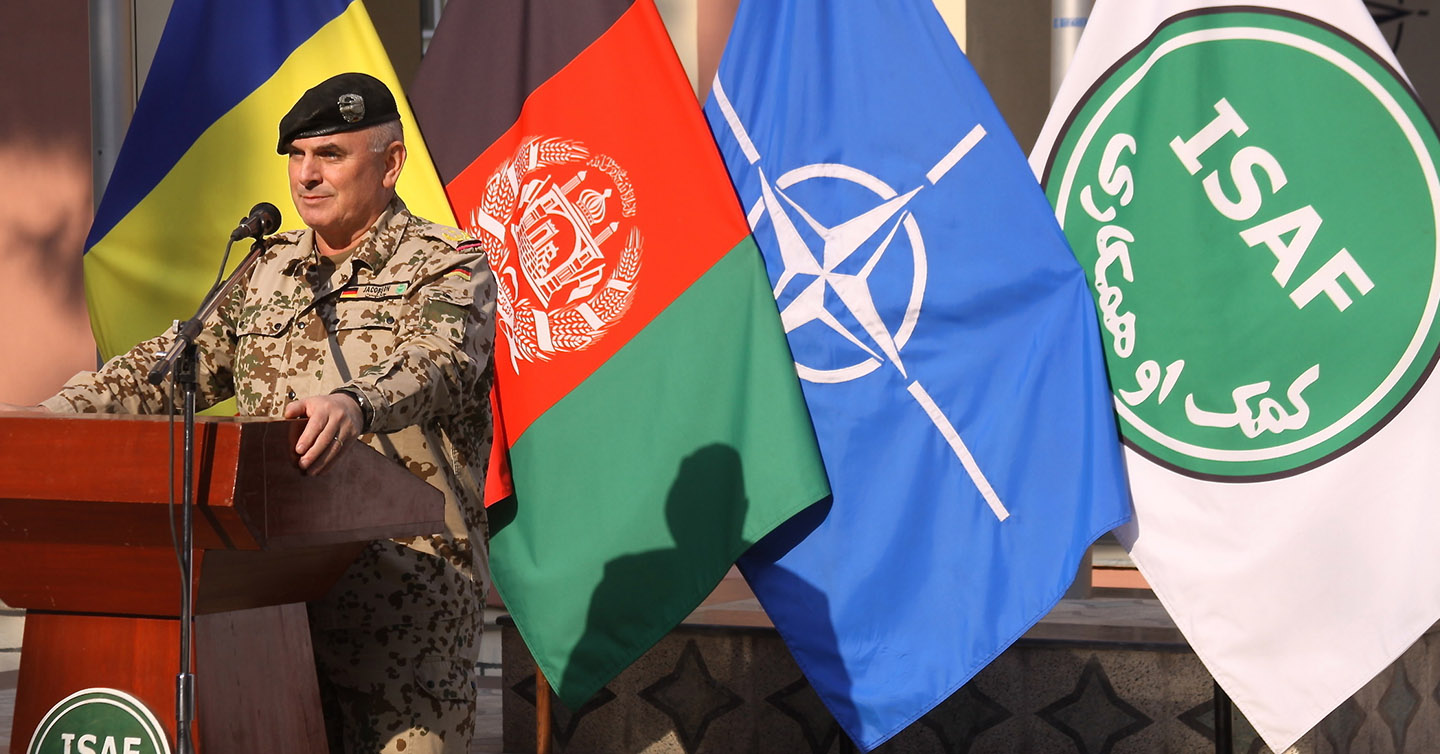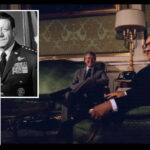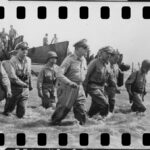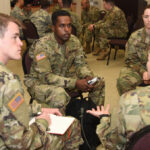
War is complex. States often have multiple objectives for sending their sons and daughters in harm’s way
Editor’s Note: In February 2019, the Institute for the Study of War and Strategy (ISWS) of the University of St. Andrews and the U.S. Army Strategic Studies Institute (SSI) brought together 11 scholars, each representing the view of a different country or in one instance the institutional apparatus of NATO, to discuss “Lessons Learned from Afghanistan.” In the spirit of the St. Andrews conference, War Room presents a series of reflections inspired by the conference, written by attendees from three different countries.
I expected the St. Andrews conference to reveal stark differences among how each of the widely varied countries that were represented viewed the war in Afghanistan. Population size is a crude metric, but the disparity between the largest (United States, 330 million) and the smallest (Norway, 5 million) is a proxy for more important variations, such as past military experience, national and organizational culture, traditional threats, and native environment. I assumed these structural differences would manifest themselves in comparably significant differences in perception.
I was wrong. It was the commonalities that were most striking. Certainly, in terms of political systems and levels of development, the group’s members were relatively homogenous: all were rich democracies with histories of cooperation (most countries represented at the conference were founding members of NATO, the exceptions being Germany, Sweden, and Australia). Yet the recurring themes were not products of wealth or shared ideology but stemmed from the underlying strategic logic inherent to a coalition undertaking an extended, discretionary mission. As such, the lessons learned transcended NATO and the “Five Eyes” countries’ concerns. Regardless of the exact make-up of the alliance or coalition, senior leaders — particularly those from the United States — must understand how the purpose that each partner is pursuing affects their contribution.
Being a Good Ally
At the U.S. Army War College, aspiring strategists learn that military operations must serve the objectives they are meant to achieve. The “ways” (operational and tactical methods) should support the “ends” (policy aims). The St. Andrews conference revealed the practical difficulty in applying this tenet of strategy within a coalition fighting a “war of choice.” Allies generally went to Afghanistan for some combination of three reasons: the humanitarian impulse to improve a troubled country, the security imperative of counter-terrorism, and the desire to maintain or improve relations with the United States. Though each country’s specific cultural and domestic political context caused natural variations in emphasis, panelists consistently identified the desire to remain close to the United States as the most important. This was evident in the aptly titled findings of a Norwegian commission studying the lessons of Afghanistan: A Good Ally.
Deploying forces as a “down payment” on relations with a critical ally is at once a perfectly logical and highly problematic strategic objective. For a government, it is a logical employment of the military to advance national interests. But for the military this does not give useful strategic direction. As one conference participant remarked, “Forces had already achieved their prime purpose upon arriving in country.” The schoolhouse construct of aligning ends, ways, and means is short-circuited when the commitment of the means is an important end in itself. Of course, there were additional objectives for allies, so the purpose of forces was not solely “being there.” Indeed, there were perhaps too many ancillary ends. Without the ballast of an overarching purpose that could usefully guide action, at each level — governments, military institutions and units, and individual service members — found it difficult to reconcile a varied, sometimes conflicting, constellation of demands.
Governments
Even for governments, the objective of being a good ally caused difficulties. On one hand, it demanded visible contributions to the coalition. But action can lead to casualties, and most panelists noted their governments were keenly sensitive to the effect of casualties on public opinion, with their associated political costs. Interestingly, these fears seem to have been overblown; several panelists commented on the lack of correlation between casualties and loss of public support. Governments leaned toward caution; with much of the strategic benefit having been realized upon the commitment of forces alone, governments sought to minimize subsequent costs.
Governments agonized over proper distribution of their forces. In Norway, a NATO request to relocate some of its forces to southern Afghanistan sparked a fierce debate. Many worried that a decision to decrease Norway’s presence in an area would cause it to no longer be viewed as a good ally. Thus, there was a mixture of relief and consternation when, during the Commission’s interviews with senior U.S. officers, that the country’s great controversy had been entirely forgotten by key American figures just a few years on.
This incident highlights just how ephemeral being regarded as a good ally can be, rooted as it is more in perception than reality. Perhaps for this reason, casualties have taken on a perverse centrality on both sides of the ledger; governments fear them domestically but then tout them as proof of being a good ally. Of the 10 national presentations, only that of the United States made no reference to the number of casualties. As panelist Rhys Crawley noted, this echoes the remarks of Australian Prime Minister Billy Hughes at the Versailles Peace Conference — that he represented 60,000 dead and therefore deserved to be heard.
The example proves that casualties as a measure of commitment are not unique to our time nor to Afghanistan. Policymakers employ these figures because they are easily conveyed yet have deep emotional resonance, the coin of the realm in politics. Nonetheless, they are a poor measure at any level. There is no obvious number of casualties per capita that signifies a good ally. Does any government believe it was one large IED blast short of being a good ally? The question exposes the illogic of elevating a measure of tactical failure to strategic gain. More pointedly, the disparity between coalition and Afghan casualties renders loss a poor debating point for arguments of relevance. Yet the difficulty of documenting progress in counterinsurgency, likely makes casualties an unavoidable metric in that context. In this is perhaps one lesson of Afghanistan: when sacrifice becomes an end in itself, something is amiss.
Military Institutions and Units
The strategic objective of being a good ally posed even greater difficulties for military institutions and units. Afghanistan offered some opportunities for allied militaries: experience in combat and on higher operational; justification of past defense expenditures; and improved interoperability. But as the aphorism “wars break armies” attest there are also negative effects. The exigencies of conflict can lower accession standards, curtail military education and training for other missions, and deplete stockpiles. Former Secretary of Defense Robert Gates continues to rail against the military services’ resistance to meeting the demands of the current missions in Iraq and Afghanistan. Yet if U.S. military institutions are reluctant to go all in, then it is not surprising that foreign service chiefs were not eager to “bend their services out of shape” for years or decades, perhaps imperiling security at home, for only a marginal effect on the outcome in Afghanistan.
One might presume deployed units would have greater focus on the coalition mission in Afghanistan. The ISAF operational command outlined objectives in painstakingly developed campaign plans cascading from echelon to echelon. (That said, ISAF plans were not free of contradictions; for instance, there were some inherent tensions between objectives, such as supporting Afghan security chiefs and combating corruption.) Additionally, across the coalition there was a general acceptance of population-centric counterinsurgency doctrine and acknowledgement of the need for a whole-of-government or, as many allies refer to it, comprehensive approach.
Senior leaders … must understand how the purpose that each partner is pursuing affects their contribution
Yet in Afghanistan the problems were so large in comparison to the means, so localized in their expression, so intractable that even if there were a solution its realization lay beyond the tour of any unit, that commanders of necessity had wide latitude in how to apply their orders. It was not necessary to explicitly reject the ISAF counterinsurgency strategy, as was the case with one U.S. brigade, for a commander to shape the campaign to personal taste. There were countless decisions within proper military subordination regarding methods and emphases among force protection, security operations, reconstruction, poppy eradication, route protection, and building up the Afghan forces. In weighing these options, as accounts of the British experience in Iraq and Afghanistan make clear, contingent commanders were aware of what was important back home. Moreover, a unit brought its own secondary objectives to the fight: whether to outperform the preceding regiment or battalion, demonstrate the utility of a particular organization or specialty, or build the personal reputations of its leaders.Individual Service Members
Why soldiers, sailor, and airmen fight is one of the oldest — and as yet unreconciled — themes of literature. An intriguing, though undeveloped, note of the conference was the comment that several countries with no previous tradition of assertive veterans groups have seen the emergence of organizations similar to those in the United States. In this unexpected development, perhaps there is a deeper insight into the ways that soldiers in an all-volunteer force fighting in a war of choice reconcile the personal risks and hardships for themselves, families, and friends. After all, in his book War, Sebastian Junger was writing about U.S. soldiers when he noted: “In the Korengal the soldiers never talked about the wider war — or cared — so it was hard to get a sense of how the country as a whole was faring.” If the larger objectives of Afghanistan were too abstract for the lead country to absorb, then an aim of better bilateral relations with the lead country could hardly have been any more compelling to its allies’ soldiers.
Making Sense of Afghanistan
War is complex. States often have multiple objectives for sending their sons and daughters in harm’s way. Even when a country’s primary purpose is simply to be a good ally, it is still possible for secondary aims to provide enough direction, a strong enough narrative, to guide the actions of institutions, units, and individuals and help them make sense of what they are doing and why. The impression given in the conference was that this did not happen. The overarching aim of “being there” was too strong and the secondary aims too diffuse and contradictory to provide a strong link between ends and ways. Consequently, all muddled along, doing their best, but often moving in diverging directions.
This was exacerbated by — or perhaps due to — the manner in which responsibility for success was scattered across time and space. The enormity of the task in Afghanistan and the uncertainty as to which of the myriad security, political, economic, or societal objectives would yield the most benefit forced commanders to weigh the value of incremental gains of uncertain long-term utility against readily understood interests, for which they were personally accountable. An allied commander might have responsibility for a province or district, but that was only a part of a larger interconnected whole; therefore, success ultimately depended on the efforts of higher military-civilian echelons, adjacent units, and lines of successors, with some potentially acting in response to different imperatives stretching into the future. That any progress was achieved under those conditions is a testament to the professionalism of the military personnel, diplomats, and aid specialists who fought for it.
Yet these ambiguous results have — as the other articles in this series note — contributed to a seeming lack of appetite to learn lessons. Many participants regarded the Norwegian commission report as the gold standard for lessons learned, yet it noted that its armed forces have difficulty in capturing “complex, situation-dependent knowledge…in a way that makes the findings applicable and relevant for policy development and strategy design.” This is not to say that no learning happened. The general sense conveyed by the panelists was that units adapted in generally appropriate ways to their operational environments. Yet to paraphrase a common refrain: “We tried X, then we tried Y, and in the neighboring province another country tried Z. There were signs of progress and flashes of success, but no method produced unequivocal success.” And there was also some doubt as to whether the granular tactical lessons most likely to be captured, might also be specific to the context of Afghanistan and of little use elsewhere.
The consensus, however, was that there is an active desire to forget at the level of policy. As the Norwegian representative candidly noted, for a smaller power, there was little practical choice as to whether it would participate. Strategy requires agency: the ability to choose among several courses of action. If structural factors compel a country to enter a war, within which it then has ability to influence the larger policy, then there is little to be gained from minute examinations of past decisions. There is only one big question to answer: In the future, will it be worthwhile to be a good ally?
Miss the earlier articles? Check out the reflections of Gunhild Gjørv and Martijn Kitzen. Later this year, ISWS and SSI will produce a conference report incorporating the contributions of all presenters.
JP Clark is is a lieutenant colonel in the U.S. Army and serves as Deputy Director for Academic Engagement at the Strategic Studies Institute, U.S. Army War College. The views expressed in this article are those of the author and do not necessarily reflect those of the U.S. Army War College, U.S. Army, or Department of Defense.
Photo: Service members at Headquarters, International Security Assistance Force (ISAF) come together to celebrate Romania Day in Kabul, Afghanistan, December 1, 2014.
Photo Credit: Nicole White/ISAF Public Affairs





According to composer Philip Glass in his 2015 memoir, a Julliard technique for a composer is to arrange sheet music on the floor and then stand on a chair (or climb a ladder) to get the bird’s eye view of the entire composition (or at least the large movements). War is indeed complex and the Official Norwegian Reports may well be the “gold standard” providing a 10,000-foot analysis of the Afghanistan experience from an impartial perspective.
The thematic sentence in the Chapter 1 summary of the Official Norwegian Reports acknowledges the bottom line up front: “Despite more than fifteen years of international effort, the situation in Afghanistan remains discouraging.” With discouragement acknowledged, fused relationships may well be the nuggets of salvaged positive results. Allies will always have future choices and as Norway points out, “others will set the overall framework.” The U.S. will undoubtedly always (or almost always) be the nation setting the framework for future international efforts. Exploring lessons learned from Afghanistan and other wars, while analyzing ends, ways, and means will be the ongoing complex composition and participant responsibility to view from the ground up and from the elevated view toward the boots on the ground.